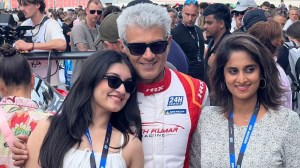Jameela’s story
Jameela remembers being subjected to a variety of restrictions as a girl but attributes it more to middle-class values than religious orthod...

Jameela remembers being subjected to a variety of restrictions as a girl but attributes it more to middle-class values than religious orthodoxy on the part of parents. Painting and dancing which she loved were not allowed, so she found creative expression by writing poetry. She rebelled against wearing a burqa to college and asked why prayers had to be said in Arabic, why not in Urdu. After marriage to a Muslim who happened to be a leftist, she was under no compulsion to practise traditional religion. In the ’70s and ’80s she saw cousins in poor families being married off to elderly men in the Gulf, and women (including a sister) being threatened with talaq for trifling disobedience. In the ’90s she did a survey with another researcher (a Hindu) for a women’s studies unit in which they interviewed about 500 women in Hyderabad on what they felt about Muslim personal law. The majority wanted changes in the polygamy and triple talaq provisions but were too afraid to say ‘change the personal law’. When she presented these findings she was branded a BJP agent. Women’s groups, she says, should not have abandoned their campaign for a gender-just civil code. She remembers urging them in the ’90s, ‘don’t call it a uniform civil code, let’s just set up a women’s personal law board, we can look at all personal laws from a women’s perspective’. But to no avail.
Jameela is not a practising Muslim, her personal belief is in a ‘soul’ which has an innate power to guide and give courage. What were her thoughts when the Ram Janmabhoomi conflict was at its height? She recalls a poetic flight of fancy visualising an ‘invisible’ yogini dancing on the domes of the mosque. Yoginis, she explains, are women mystics portrayed in Deccani painting. She is unhappy that the Hindu-Muslim harmony she knew in her childhood days has gone. It went beyond celebrating festivals together and had many dimensions. For example, there was a Telugu teacher who used to visit their house who also had knowledge of Arabic. In the ’90s she organised an exhibition of paintings by artists belonging to different religions using Telugu and Urdu poems to express the ideas in the pictures. Today she is active with other progressive Muslims in the country who are working to bring about both communal harmony and reforms within their own community. She runs a centre in the old city of Hyderabad to conscientise young Hindu and Muslim women in the locality to work together on gender and communal issues that concern both.
Extracted from ‘Through A Prism, Brightly: Conversations With Women On Religion, Spirituality and Communalism’, Asmita, 2005



- 01
- 02
- 03
- 04
- 05




























